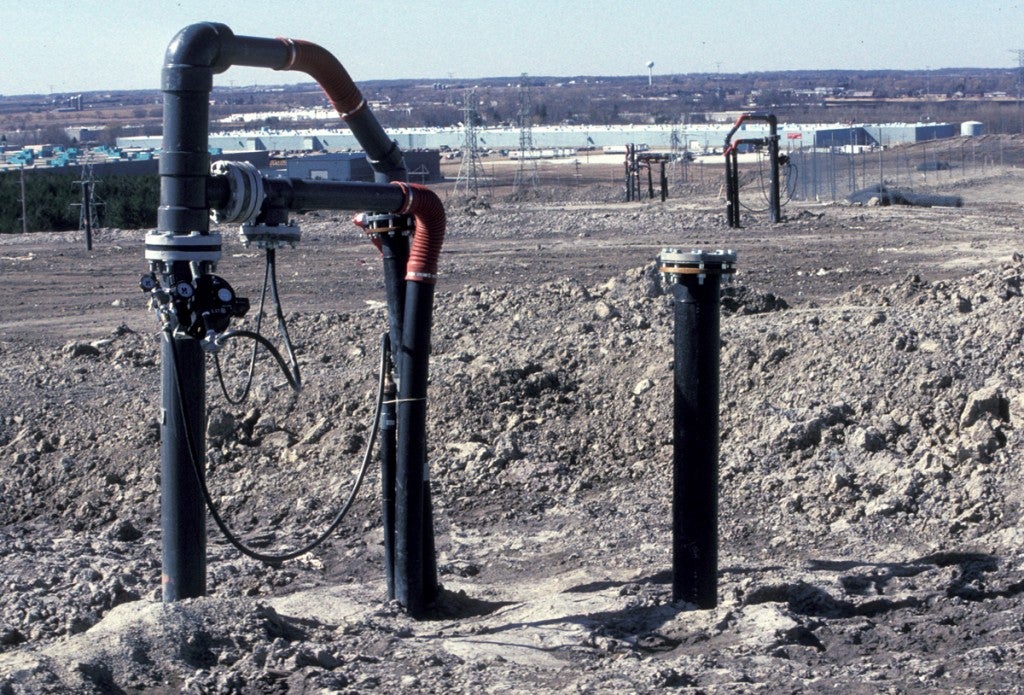(This post was co-written by EDF’s Tomás Carbonell)
This morning the Environmental Protection Agency (EPA) finalized long-overdue revisions to national emission standards and emission guidelines for new and existing municipal solid waste landfills.
These standards will reduce harmful air pollution from landfills, which are our nation’s third largest source of climate-destabilizing methane pollution and also discharge other deleterious pollutants.
In 2025, EPA estimates that the final standards and emission guidelines will reduce methane emissions by an estimated 334,000 metric tons and non-methane organic compounds by more than 2,000 metric tons, primarily by expanding the application of landfill gas capture technology.
Today’s announcement updates standards and guidelines for existing sources that have not been substantially changed since they were first issued in 1996. Over the last two decades, technology and practices have evolved to enable better and more efficient control of landfill emissions — both from new and existing sources. For instance, leading landfill operators and industry experts have identified and implemented a number of best practices for achieving further reductions in landfill emissions, including: installing gas collection systems early in the life cycle of the landfill; using proper landfill covers and rigorously monitoring the integrity of those covers; using landfill gas as an energy source to replace fossil fuels; and developing alternatives to landfilling, including recycling and composting of organic waste.
Despite these advances, some have argued that EPA is not authorized to update emission guidelines for existing sources and instead must maintain requirements that are now more than 20 years out of date. EPA’s authority to review and revise emission guidelines for existing landfills, however, is firmly grounded in the text and purpose of the Clean Air Act and consistent with bedrock principles of administrative law.
Section 111 of the Clean Air Act, which authorizes these standards and guidelines for landfills, requires standards for new and existing sources alike to reflect the “best system of emission reduction,” taking into account cost and other factors.
Courts have consistently held that this provision of the Clean Air Act is manifestly forward-looking, enabling EPA to:
look toward what may fairly be projected for the regulated future, rather than the state of the art at present (National Asphalt Pavement Association v. Train, F.2d 775, 785, D.C. Circuit 1976 — quoting Portland Cement Association v. Ruckelshaus, 286 F.2d 375, 391, D.C. Cir. 1973)
If EPA is to fulfill this statutory obligation, it must have the ability to ensure that guidelines for existing sources are updated over time – just as the agency does for new sources — to reflect the latest advances and improvements in systems of emission reduction.
More broadly, EPA’s authority to update guidelines for existing sources flows inexorably from the fabric of the Clean Air Act, which recognizes the importance of EPA assessing new information about air pollution threats, incentivizing development of new technologies, and enabling their swift application.
In amending the Clean Air Act in 1977 Congress explicitly noted the importance of providing for continuous development and updating of standards:
Throughout this bill there is a philosophy of encouragement of technology development. It is an encouragement to induce, to stimulate, and to augment the innovative character of industry in reaching for more effective, less-costly systems to control air pollution. (S. Rep. No. 95-127 at *18, 1977)
Indeed, EPA periodically revisits the nation’s health-based standards for various pollutants in light of new scientific information and has revised standards for sources ranging from cars to power plants as new technologies have enabled more efficient and protective approaches. This process of regular review and improvement is consistent with firmly established principles of administrative law, which have long held that agencies have authority to revisit and update their regulations over time.
As the Supreme Court held in a landmark case:
Regulatory agencies do not establish rules of conduct to last forever; they are supposed … to adapt their rules and practices to the Nation’s needs in a volatile, changing economy. They are neither required nor supposed to regulate the present and the future within the inflexible limits of yesterday. (American Trucking Associations, Inc., et al v. Atchison, Topeka & Santa Fe RR Co., et al., 387 U.S. 397; 87 S. Ct. 1608, 1967)
Although EPA’s final landfills standards secure important benefits for climate and public health, there remain significant opportunities to achieve cost-effective emission reductions from municipal solid waste landfills. EPA’s decision to revise its landfill standards, however, is firmly consistent with the Clean Air Act’s long history grounded in innovation and cost effective pollution reductions. It can help to ensure these requirements remain vibrant over time and spur development of these and other new technologies to reduce landfill pollution.











2 Comments
Hi to all, it’s really a nice for me to pay a visit this website, it contains
important Information.
Tɦanks for sharing sucɦ ɑ nce thinking, paragraph iss nice,
tһats why i hаve reaԁ it entirely